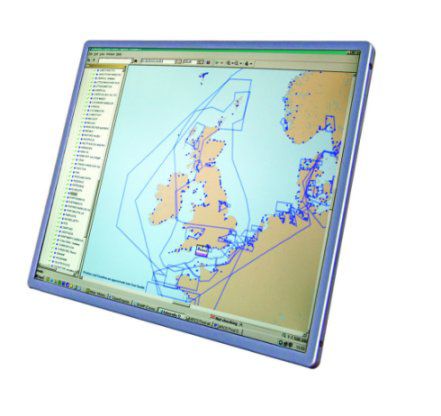
- Seaiq naviagtion software install#
- Seaiq naviagtion software android#
- Seaiq naviagtion software free#
If cellular usage is excessive with your AIS app, consider using this tool a bit more sparingly, such as when passing through a dense fog.
Seaiq naviagtion software free#
Not surprisingly, the free and lowest-cost versions permit fewer vessels on the screen, so it makes sense to pay for more coverage.Ĭellular data usage is another critical issue to consider, particularly if the app is left on constantly during long hauls along the coast, and even more so if the app is sending as well as receiving. As one vessel disappears, another likely appears elsewhere on the screen. This is no doubt due to the limit of vessels permitted on the screen by individual app designs. Some AIS app users complain about how ships sometimes disappear from view when the screen updates. Some of these units come with a remote VHF/AIS handset, allowing you to move about the deck while staying tuned in to the vessel’s position. Again, if you are considering venturing offshore, a dependable and permanently installed AIS unit, such as those offered by Garmin, Raymarine and Furuno, is your best bet.

One drawback of most AIS apps is their limitation to coastal navigation where you are close to a cell tower, which generally means within 10 miles of shore near major population areas. If you want to know only the location of other boats, you can save a few bucks but if you do not mind the added expense, it pays to get both transmitting and receiving capability. Some AIS apps allow your smartphone to transmit your position, but not all do. SEAiq showing traffic in San Francisco Bay.Ī downloadable AIS app on your smartphone, of course, is not a true substitute for a genuine AIS transceiver, but it allows you the benefit of vessel tracking without the expense of conventional AIS. It was especially invaluable around the Channel Islands where commercial traffic is normally high.”
Seaiq naviagtion software android#
“The Android app Marine Traffic,” B1948J said, “gave us constant AIS info on our cellphones - and we had cell signals all the way down the coast. This is not surprising, since some cruising skippers are still getting acquainted with AIS as an essential component of an oceangoing vessel’s arsenal of navigational electronics.

In a response to my July online article, a sailor using the online ID of “B1948J” explained how he or she had just delivered a vessel from San Francisco to Los Angeles, but the boat had no AIS capability.

Many users of AIS apps claim that using these navigation tools as an alternative to VHF-AIS systems is an effective and safe means of monitoring coastal ship traffic. If a permanent AIS installation is what your vessel requires, check out my Ocean Navigator Marine Electronics newsletter from July 2016, “Wireless remote VHF-AIS radios,” which will provide a quick introduction into the options these models offer.
Seaiq naviagtion software install#
Garmin, B&G and other electronic manufacturers offer a variety of quality VHF/AIS packages, all of which are ideal for offshore use but require a greater outlay of cash and a bit of work to install the base station, wireless hub and associated wiring. In recent years, AIS has evolved from being primarily a tool for large cargo and passenger vessels to a handy navigation option for coastal and offshore cruising vessels.įor offshore vessels, the only wireless option for AIS is still a wireless VHF handset operating from a base station on the boat. If you are staying within range of cell towers and are not heading offshore, the iPhone or Android smart devices offer essentially the same service as the more expensive AIS installations in apps that are easy to use and either free or very affordable.Ī conventional AIS unit is a VHF radio capable of sending and receiving digital signals with ship identification and GPS position from surrounding vessels equipped with AIS technology. Imagine cruising along the coasts of North America while monitoring the GPS positions, vessel speeds and headings of commercial vessels and pleasure craft through your smart device. If you have been waiting to find a hand-held automatic identification system (AIS) device rather than a remote hand-held VHF-AIS unit operating from a base station, the answer to your plea has emerged in a different form: AIS apps downloadable to your smartphone.


 0 kommentar(er)
0 kommentar(er)
